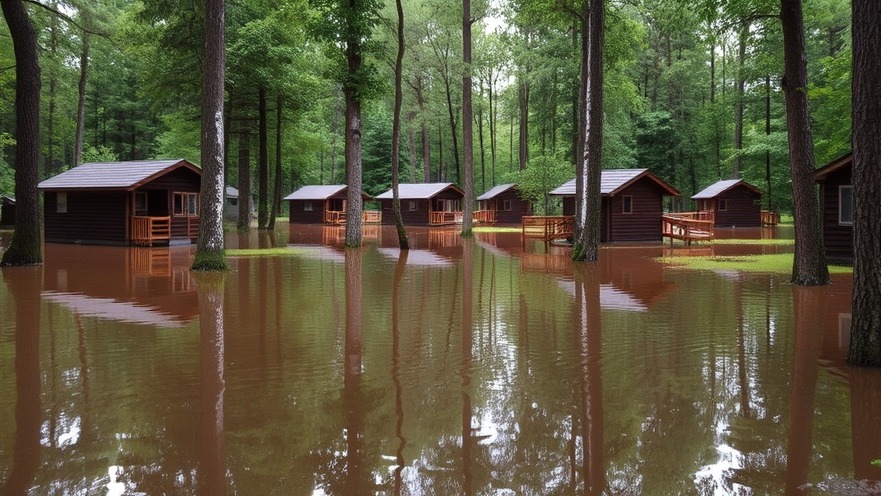
Child Safety at Summer Camps: A Growing Concern
The tragic flooding incidents during the July 4 holiday in Kerr County have shone a glaring spotlight on the safety conditions surrounding summer camps in Texas. With over a dozen camps located in flood-prone areas along the Guadalupe River, the issue of child safety in environments that carry inherent risks is more pressing than ever. The all-girls Christian summer camp, Camp Mystic, where 27 individuals lost their lives, was one of many built decades ago before modern flood modeling practices were established. Such camps not only risk the lives of children and staff but also raise the question of regulatory oversight and accountability in construction within flood zones.
Historical Context of Floodplain Construction
Historically, many summer camps were constructed before contemporary flood management techniques were available. As Sarah Pralle, an environmental policy expert, notes, "We overbuild in flood zones everywhere across the country." This calls into question whether sufficient measures are being taken today to protect the next generation of campers. In states like Texas, where flooding incidents have dramatically increased due to climate change, we must reconsider how we define safety standards in these recreational spaces.
Impact of Climate Change on Flood Risk
The Federal Emergency Management Agency's floodplain maps rely on outdated rainfall totals that do not account for the increasing precipitation brought about by climate change. These models, which traditionally predict a 1% chance of flooding within a 100-year span, have proven insufficient in today's context, where rainfall patterns are more erratic and severe. This mismatch between prediction and reality makes it increasingly likely that unsuspecting children and families will unknowingly place themselves in harm's way.
Community Responses and Legislative Action
With the tragic events of the summer flooding still fresh in public memory, many are calling for stronger regulations surrounding construction in flood zones. The owners of the camps, including Camp Waldemar, which testified before a legislative committee, highlighted how certain cabins are strategically located to allow for safer shelter-in-place protocols during crises. However, as discussions unfold, accountability and legislative action are imperative to ensure that camp safety is not an afterthought. Communities are seeking answers on what measures can be implemented going forward to prevent future tragedies.
Lessons from Disaster: Evacuation Protocols and Preparedness
The flooding marked a wake-up call for not just camp owners but also for parents considering summer camp safety. Camp La Junta's timely evacuation of its campers illustrates the effectiveness of preparedness measures. In contrast, many other camps found themselves ill-equipped to protect their patrons during the unexpected disaster. This raises a critical question about the protocols in place across various summer camps: How well-prepared are they to handle emergencies? Ensuring effective evacuation plans and adequate training cannot be overstated.
Cultivating a Safe Camp Environment
As the landscape of safety evolves, camps must adapt to new realities that reflect the pressing environmental challenges of our time. Camp directors should prioritize not just the infrastructures but also training for emergency situations to safeguard campers. Educational initiatives aiming to raise awareness about the risks associated with operating in flood zones are crucial. Not only does this ensure the well-being of those involved, but it could also serve as a model for similar institutions nationwide.
Call to Action: Get Involved in Local Initiatives
As Texas grapples with increasing weather volatility and its implications for youth safety at summer camps, community involvement is vital. Support local initiatives advocating for better regulations and practices that ensure child safety in recreational spaces. Together, let us strive for a future where every summer camp can provide not just fun, but safety and security for all campers.
 Add Element
Add Element  Add Row
Add Row 



Write A Comment